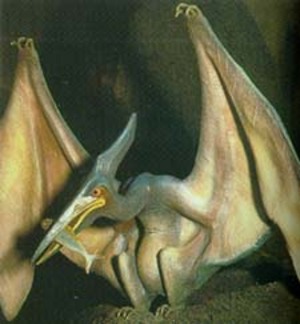Energy, we are sucking it up faster than Mother Nature can produce it. We guzzle fossil fuels (coal, natural gas, and oil) by the second without caring that it took the earth over one hundred million years to create them. Once we have sucked the very last drop of these energy sources out of the earth it will take another one hundred million years or so for a refill. What will we do in the interim? Imagine a magnificent Pterodactyl swooping down on its flitting prey. Do you think the idea of extinction ever crossed his mind?
Non-renewable energy sources are fossil fuels (coal, natural gas, oil, petroleum, tar sands, natural gas hydrates, and shale oil). Though they are continually being produced underground from biomass, it takes about one hundred million years for natural processes to produce useful amounts of petroleum, natural gas, or coal. The two main problems with non-renewable energy sources are:
- We are using fossil fuels much faster than they can replenish
- Non-renewable energy creates atmospheric pollution
What will we do when we have used up all of the non-renewable energy? Will we go without food, delivery trucks, heat, hot water, all of our electronic gadgets, our planes, trains, and automobiles? We need to turn to the only three renewable sources of energy that we have: solar, geothermal, and tidal.
Solar energy includes direct sunlight, wind, hydroelectric power, ocean currents, ocean thermal gradients, and biomass. When we think of solar energy we may automatically think of solar panels. Some of its practical uses are water heaters, pool heating, electric systems, bio-diesel, wind turbines, and skylights. Two companies at the forefront of solar energy products are General Electric (GE) and British Petroleum (BP). Unfortunately, solar energy is an expensive form of energy and prices need to become more affordable for it to be a feasible alternative for the average household.
Geothermal energy is derived from the natural heat of the earth. A geothermal reservoir capable of providing hydrothermal resources (hot water and steam) is necessary to harness this form of energy. The geothermal reservoirs must be close enough to the earth’s surface for steam or hot water to reach the surface. Three types of generation plants are used: dry steam, flash steam, and binary cycle. The basic concept of geothermal energy is that steam from the earth’s heat is used to power generators to produce electricity.
Tidal energy basically involves creating a dam across the opening to a tidal basin. Then, hydropower technologies are used to generate electricity from the elevated water in the basin. Tidal energy can be used to power turbines mounted on the ocean floor. Offshore turbines are another alternative. Ways may also be found to extract energy directly from tidal flow streams. A tidal energy facility, La Rance station, has been in operation in France since the 1960’s. Russia has also built a small experimental system. Approximately nine countries have identified potential sites for tidal energy facilities. However, some believe that tidal energy projects are not financially feasible due to long construction periods resulting in high unit costs of energy. Potential negative effects on the ocean’s ecosystems are also a concern. More studies need to be conducted regarding tidal energy.
Solar, geothermal, and tidal renewable energy sources are possible ways to provide energy to society after all the fossil fuels on earth have been consumed. In the long run, their pursuit will be well worth our time and investment. Conceivably, the more renewable energy we use, the cheaper it will be. Once we have mastered renewable energy sources they will be available for all of the generations to come.
